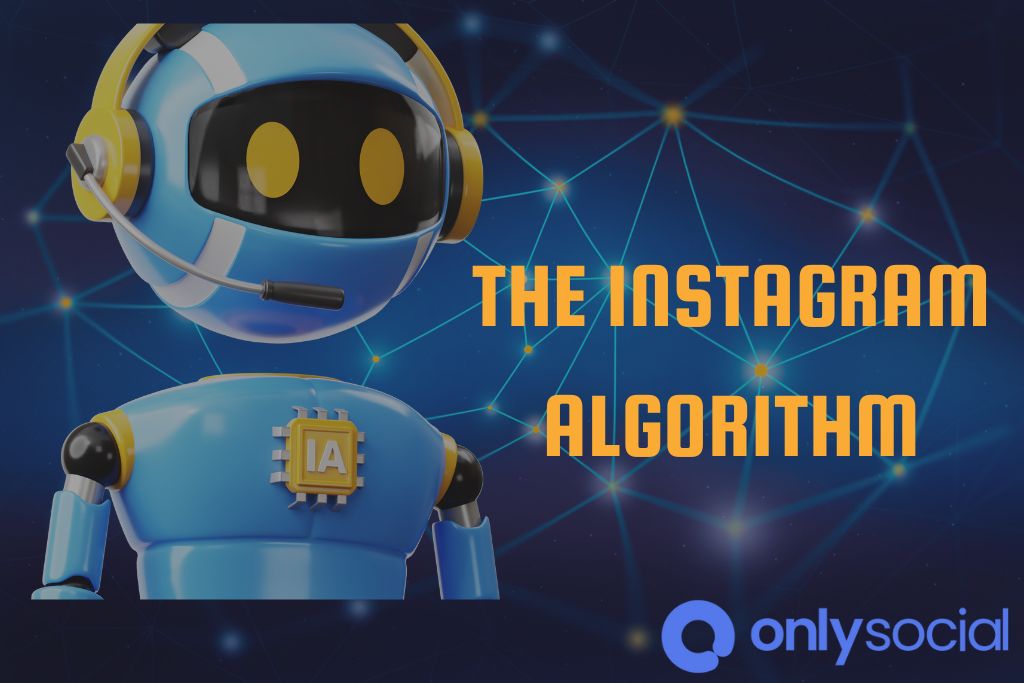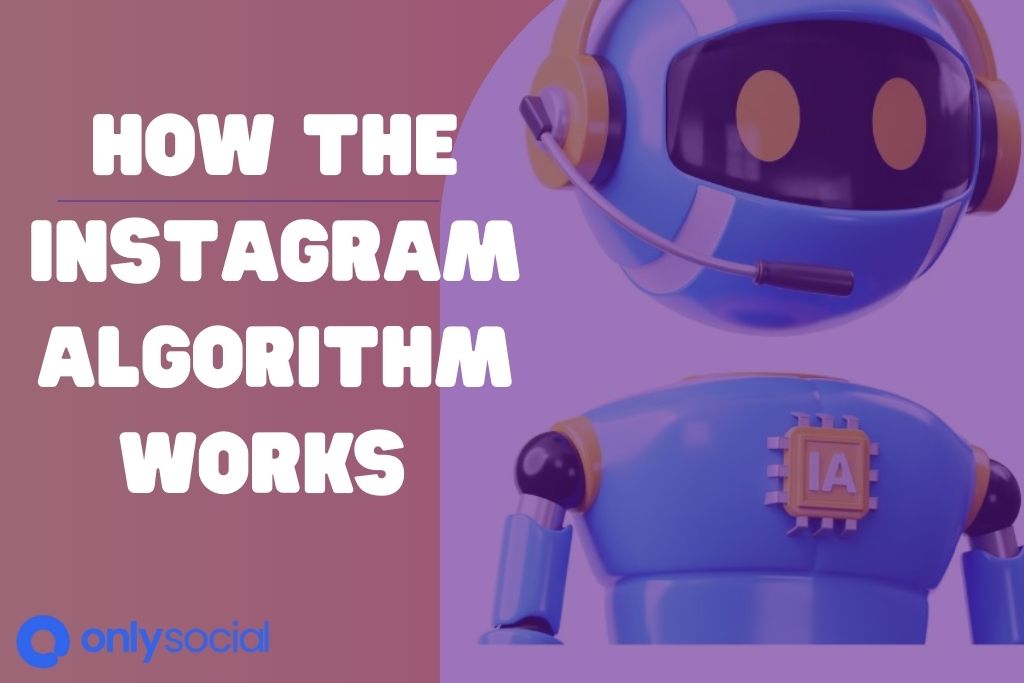In the ever-evolving world of social media, the Instagram algorithm has piqued the curiosity of users and researchers alike. As we step into the year 2023, it becomes essential to delve into the evolution of this algorithm and gain a deeper understanding of its core factors.
This article aims to provide an analytical overview, unraveling the influence of user engagement on the algorithm and shedding light on the significance of relevance in determining content visibility.
By uncovering the secrets behind the algorithm’s recommendations, this piece equips you with valuable insights and practical tips to amplify your reach on Instagram.
Table of Contents
- 1 The Evolution of the Instagram Algorithm
- 2 Understanding the Core Factors of the Algorithm
- 3 How User Engagement Impacts the Algorithm
- 4 The Role of Relevance in the Instagram Algorithm
- 5 Unveiling the Secrets Behind the Algorithm’s Recommendations
- 6 Navigating the Algorithm: Tips for Boosting Your Reach
- 7 BONUS
- 8 Frequently Asked Questions
- 8.1 How Does the Instagram Algorithm Prioritize Content From Different Users?
- 8.2 Does the Instagram Algorithm Take Into Account the Number of Followers a User Has?
- 8.3 Can the Instagram Algorithm Detect Fake Engagement and Penalize Accounts for It?
- 8.4 What Role Does the Time of Day Play in the Instagram Algorithm’s Content Distribution?
- 8.5 Are there Any Specific Factors That Can Negatively Impact a User’s Visibility on the Instagram Algorithm?
The Evolution of the Instagram Algorithm

The evolution of the Instagram algorithm has been a subject of interest and research for scholars studying social media platforms. Over the years, Instagram has undergone several evolutionary changes in its algorithm to enhance user experience and improve content relevancy. These algorithmic advancements ensure users are presented with the most relevant and engaging content on their feeds.
One significant evolutionary change in the Instagram algorithm is the shift from a chronological feed to a personalized feed based on user preferences and engagement patterns. This change was implemented to prioritize content users are more likely to interact with, thereby increasing user satisfaction.
Another important advancement in the Instagram algorithm is incorporating machine learning techniques. By analyzing vast amounts of data, including past user behavior, post engagement, and interests, machine learning algorithms can predict the content an individual user is likelier to engage with. This allows Instagram to deliver personalized content recommendations tailored to each user’s preferences.
Furthermore, the algorithm now considers post popularity, relevance, recency, and relationship between users when determining which posts appear on a user’s feed. Additionally, it considers factors like time spent viewing a post or video completion rate when evaluating engagement levels.
Understanding the Core Factors of the Algorithm
This discussion focuses on the core factors of the Instagram algorithm.
Namely, the key ranking factors, user engagement metrics, and the impact of influencer collaborations.
Understanding these factors is crucial for individuals and businesses looking to optimize their presence on the platform.
By analyzing these key aspects, one can understand how Instagram determines which content to prioritize and how users interact.
Ultimately, this leads to a better understanding of engaging with audiences and increasing visibility on the platform effectively.
Key Ranking Factors
One of the key ranking factors in the Instagram algorithm 2023 is the engagement rate, which measures the level of interaction users have with a post. This factor has become increasingly important due to recent algorithmic updates prioritizing user engagement and satisfaction. The algorithm considers various metrics to determine a post’s engagement rate, including likes, comments, shares, and saves.
To improve their ranking on Instagram, users should focus on increasing their engagement rate by creating high-quality, engaging content that resonates with their audience. Additionally, users must understand the importance of algorithmic transparency. Instagram has clarified how its algorithm works and determines what content appears on users’ feeds.
User Engagement Metrics
User engagement metrics are crucial in determining a post’s ranking within the Instagram algorithm 2023. Instagram’s algorithm utilizes AI-generated content optimization techniques to measure user engagement and prioritize posts that are more likely to resonate with users. These metrics help Instagram understand how users interact with different types of content, allowing it to personalize the user experience and display more relevant posts on their feed.
To measure user engagement, Instagram focuses on several key metrics, including likes, comments, shares, saves, and story views. These metrics provide insights into how users engage with a post and indicate its popularity and relevance. A higher number of likes or comments indicates that the post resonates well with users, while shares and saves demonstrate that the content is valuable enough to be shared or saved for future reference.
The following table illustrates these user engagement metrics:
| Metric | Description |
|---|---|
| Likes | Number of likes received on a post |
| Comments | Number of comments received on a post |
| Shares | Number of times a post was shared |
| Saves | Number of times a post was saved |
| Story Views | Number of views on an Instagram story |
Influencer Collaborations Impact
The impact of influencer collaborations on user engagement metrics can be observed by analyzing the changes in likes, comments, shares, saves, and story views for posts featuring influencers compared to those not. This form of collaboration has become increasingly popular as brands recognize the potential benefits it can bring to their marketing efforts.
Here are three key points to consider regarding the impact of influencer collaborations on user engagement metrics:
- Increased Reach: Collaborating with influencers allows brands to tap into their existing audience and expand their reach to a broader demographic. This increased visibility often leads to higher engagement rates as followers of the influencer are more likely to interact with the brand’s content.
- Enhanced Credibility: Influencers have built trust and credibility with their followers over time. By partnering with them, brands can leverage this trust and enhance their credibility in the eyes of consumers, leading to greater engagement.
- Diversified Content: Collaborations enable brands to create diverse and engaging content that resonates with different segments of their target audience. This variety keeps users interested and encourages them to engage with the brand’s posts.
Overall, influencer collaborations have proven to be effective strategies for improving user engagement metrics for brands on Instagram.
How User Engagement Impacts the Algorithm

To evaluate the impact of user engagement on the Instagram algorithm in 2023, an examination of various factors affecting post visibility is warranted. User retention plays a crucial role in determining the success of any social media platform, and Instagram is no exception.
The platform’s algorithm has undergone several updates to enhance user experience and optimize content delivery. One key factor influencing post visibility is the algorithm updates implemented by Instagram. These updates prioritize content users are most likely to engage with, such as posts with higher likes, comments, and shares. By analyzing user behavior patterns and preferences, Instagram can tailor the content shown to each user, ensuring a more personalized experience.
Furthermore, user engagement metrics like likes, comments, and shares contribute significantly to post visibility. Posts that receive high levels of engagement are more likely to be displayed prominently on users’ feeds. This encourages creators to produce engaging content that resonates with their audience.
The Role of Relevance in the Instagram Algorithm
Relevance is a crucial determinant in the ranking and display of posts on users’ feeds within the Instagram platform. The Instagram algorithm uses various techniques to measure relevance and make algorithmic adjustments accordingly.
Here are three key aspects of relevance measurement and algorithmic adjustments on Instagram:
- Engagement metrics: Instagram considers factors like likes, comments, and shares to assess the engagement level of a post. Higher engagement indicates the content is relevant to users’ interests, leading to better visibility in their feeds.
- User preferences: The algorithm analyzes users’ past behavior, such as their interactions with specific accounts or types of content, to determine their preferences. It then prioritizes posts that align with these preferences, increasing the likelihood of user engagement.
- Timeliness: Recent posts tend to have higher relevance as they reflect current trends and conversations. The algorithm considers the recency factor when displaying posts on users’ feeds, ensuring they see fresh and up-to-date content.
To continuously improve relevance measurement, Instagram regularly makes algorithmic adjustments based on user feedback and data analysis. These adjustments aim to enhance user satisfaction by delivering more personalized and engaging content while maintaining a fair visibility distribution among different creators and accounts.
Unveiling the Secrets Behind the Algorithm’s Recommendations
Engagement metrics, user preferences, and timeliness are key factors contributing to the algorithm’s recommendations on Instagram. The algorithm updates regularly to ensure users receive the most relevant and engaging content. It considers various engagement metrics such as likes, comments, shares, and saves to determine the popularity of a post.
Additionally, user preferences are crucial in shaping the algorithm’s recommendations. By analyzing past behavior, including interactions with posts, profiles followed, and search history, Instagram tailors its suggestions to align with an individual’s interests.
Follower activity also influences the algorithm’s recommendations. Posts from accounts that users frequently engage with or have shown interest in are more likely to appear higher in their feeds. Similarly, posts from accounts with high follower activity, such as consistent likes and comments, tend to receive better visibility.
To provide timely content, the algorithm prioritizes recent posts over older ones. This ensures that users are exposed to up-to-date information and trending topics.
Navigating the Algorithm: Tips for Boosting Your Reach
This discussion will focus on the key points of engagement versus reach and content optimization techniques within the context of navigating the algorithm on social media platforms.
Engagement refers to users’ interaction and involvement with a particular content. At the same time, reach pertains to the number of individuals exposed to that content.
Content optimization techniques aim to enhance both engagement and reach by employing strategies such as using relevant hashtags, creating visually appealing posts, and posting at optimal times for maximum visibility.
Engagement Vs. Reach
When comparing the performance of posts on Instagram, the extent of audience reach appears to have a discernible impact on their overall engagement levels. The algorithm determines how many people see a post based on various factors such as relevance, timeliness, and previous interactions. Developing effective engagement strategies and measuring reach accurately to maximize engagement is crucial.
- Utilize hashtags strategically: Including relevant hashtags increases the chances of reaching a larger audience interested in similar content.
- Encourage interactions through captions: Engaging captions prompts users to comment, like, or share the post, boosting its visibility and reach.
- Collaborate with influencers: Partnering with influencers with a significant following can expand the reach of your posts by tapping into their established audience.
Measuring reach is essential for evaluating the effectiveness of engagement strategies and understanding which types of content resonate best with your target audience. By focusing on both engagement and reach measurement, Instagram users can optimize their posts for maximum impact in terms of visibility and interaction levels.
Content Optimization Techniques
The previous subtopic focused on the importance of engagement versus reach in determining the success of Instagram content. Building upon that discussion, this current subtopic explores content optimization techniques in light of algorithm updates.
Content creation is pivotal in attracting and retaining audience attention on Instagram. To adapt to the dynamic nature of the platform’s algorithm, creators must stay informed about recent updates and adjust their strategies accordingly.
By utilizing relevant keywords, optimizing captions, and incorporating visually appealing elements such as high-quality images or videos, creators can enhance their chances of gaining visibility and engagement within users’ feeds.
Additionally, understanding user preferences through analytics tools can inform content decisions and ensure alignment with audience interests.
These optimization techniques are crucial for maintaining relevance amidst algorithmic changes while maximizing exposure and interaction with an ever-evolving Instagram user base.
BONUS
Mastering the Instagram algorithm is crucial for maximizing your social media reach. Only Social’s Post Planning and Scheduling function is the key to success. With unlimited posting and the ability to manage unlimited social profiles, OnlySocial empowers you to plan and schedule your posts across all social networks strategically. Stay ahead of the algorithm and effortlessly maintain a consistent posting schedule. Don’t miss out on this opportunity! Start your commitment-free 7-day trial today.
Frequently Asked Questions
How Does the Instagram Algorithm Prioritize Content From Different Users?
The Instagram algorithm prioritizes content from different users based on user interactions and content relevance. It analyzes factors such as likes, comments, and shares to determine the relevance of a post to an individual user’s interests and preferences.
Does the Instagram Algorithm Take Into Account the Number of Followers a User Has?
The Instagram algorithm considers various factors when prioritizing content from different users. User engagement and content quality play a significant role, while the number of followers may also be considered to some extent.
Can the Instagram Algorithm Detect Fake Engagement and Penalize Accounts for It?
The accuracy of the Instagram algorithm in detecting fake engagement and penalizing accounts for it impacts user visibility. Incorporating measures to identify and address fake engagement is crucial for maintaining fairness and authenticity on the platform.
What Role Does the Time of Day Play in the Instagram Algorithm’s Content Distribution?
The time of day plays a significant role in the Instagram algorithm’s content distribution. It determines the likelihood of engagement and the visibility of posts. Post-targeting to align with peak user activity can increase reach and optimize engagement rates.
Are there Any Specific Factors That Can Negatively Impact a User’s Visibility on the Instagram Algorithm?
Factors negatively impacting users’ visibility on the Instagram algorithm include content quality and account activity. These aspects influence the algorithm’s decision-making process, affecting user posts’ distribution and reach.




